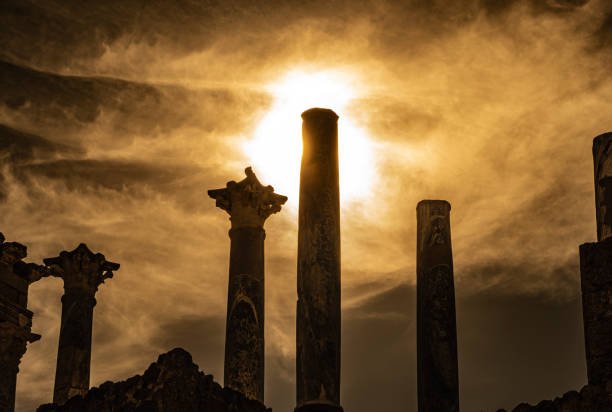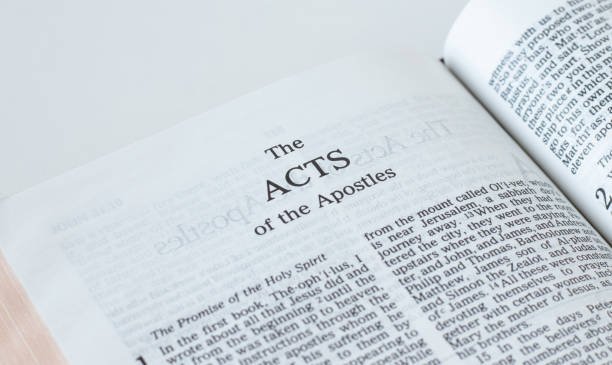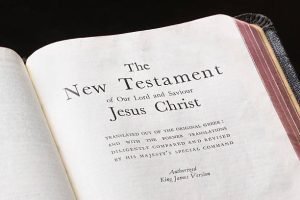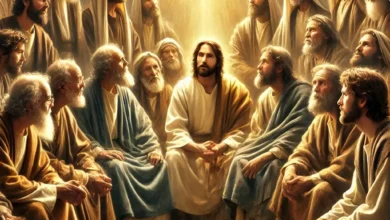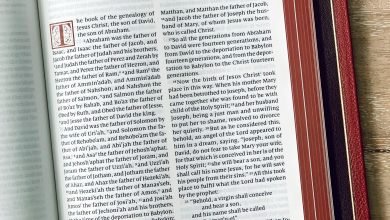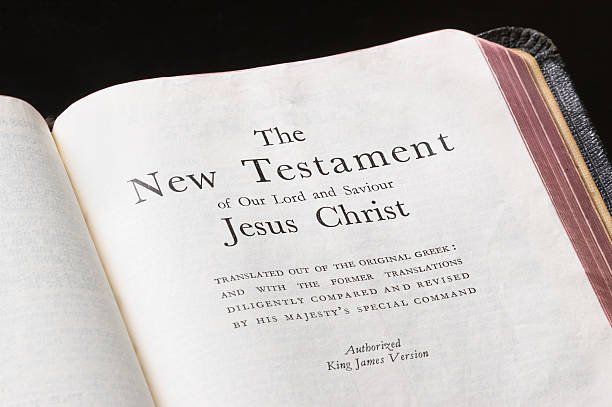
How many books are there in the New Testament? Why are there four Gospels in Christianity?
The New Testament : If you’re a bit intimidated by the idea of starting to study the 27 books of the New Testament, this introduction can help you.
The New Testament books might be shorter than most Old Testament books, but jumping straight into studying them can be challenging. Fortunately, you don’t have to read them without any prior understanding of their content.
Read more : Is God different in the New Testament and the Old Testament?
فرست محتوا
How many books are in the New Testament?
In total, the Bible comprises 66 books. Twenty-seven of these are in the New Testament:
- The Four Gospels: These narrate the conception, birth, life, death, and resurrection of Jesus Christ. They are attributed to Matthew, Mark, Luke, and John.
- The Book of Acts: Written by Luke, it serves as a sequel to his Gospel.
- Paul’s Letters: Comprising 13 letters written by the Apostle Paul to various groups.
- General Letters: Written by four individuals (John, Peter, James, and Jude) to other Christians.
- The Book of Hebrews: Written by an anonymous author, it addresses Jewish Christians to correct misconceptions about Jesus.
- The Book of Revelation: Attributed to John, it includes letters to seven churches and prophecies about future events.
Why are there four Gospels?
Each of the four Gospels is attributed to an author who either was one of Jesus’s twelve apostles or was closely connected to them. Matthew is known as a tax collector who became one of Jesus’s twelve disciples. Mark is referred to as “my son Mark,” a disciple of Simon Peter mentioned in 1 Peter. Simon Peter was one of Jesus’s three closest disciples (along with John and James).
Therefore, Mark’s Gospel is essentially Peter’s recollections of Jesus, documented by his disciple. Luke wasn’t one of the main apostles but traveled with the Apostle Paul and interviewed witnesses to write the story of Jesus. These three Gospels (or Synoptic Gospels) share many similarities, suggesting that the authors might have used each other’s works as sources.
John, like Simon Peter, was one of Jesus’s three closest disciples and is likely the “disciple whom Jesus loved” mentioned several times in the Gospel of John. About 90 percent of John’s Gospel contains material not found in the Synoptic Gospels, including a long speech Jesus gives at the Last Supper.
Many people wonder why Christians included all four accounts of Jesus’s life in the Bible instead of selecting just one. There are at least three excellent reasons for keeping all four Gospels in the Bible:
- Each Gospel has been respected throughout history: Christian churches have consistently included all four books in the New Testament, despite some minor disputes.
- Each Gospel provides different details: While it might be confusing that the Gospels don’t always agree on the timing of events or specific details, historians note that different eyewitness accounts of a historical event often remember things slightly differently. This actually helps identify false testimony (if everyone tells the same story, they’ve rehearsed a lie). Thus, the differences between the Gospels (and their agreement on important issues) suggest that they are all accurate.
- Each Gospel has a different focus: As Mark L. Strauss explains in “Four Gospels, One Jesus,” the four Gospels agree on the main details but emphasize specific themes. Matthew emphasizes Jesus as the promised Messiah, Mark as the suffering servant, Luke as the Savior for both Jews and Gentiles, and John as the Son of God revealing the Father’s plans.
What happens in the Book of Acts?
The Book of Acts begins right after the Gospel of Luke: the resurrected Jesus speaks to his disciples. After forty days of teaching them, Jesus ascends to heaven. Jesus’s followers (the eleven apostles and others) wait in Jerusalem for the empowerment of the Holy Spirit, as instructed by Jesus. In a dramatic display at Pentecost, the Holy Spirit descends upon them, transforming them into confident teachers and miracle workers.
Over the next few years, Jesus’s followers convert and baptize many new believers, who eventually become known as “Christians.” A spiritual experience leads Peter to preach to the Romans, demonstrating that their message is not only for the children of Israel: even Gentiles become Christians. Saul of Tarsus becomes a Christian after Jesus appears to him on the road to Damascus, and later becomes a pioneering missionary to the Gentiles. After returning to Jerusalem following several missionary journeys, Paul is falsely accused and uses his Roman citizenship to request a trial before Caesar.
The book ends with Paul in Rome, awaiting trial and teaching anyone who visits him. Some scholars believe Luke intended to write a sequel that included Paul’s ministry in Rome (he was under house arrest for several years awaiting trial). Paul spent his time awaiting trial teaching anyone who visited him. Apparently, Paul’s trial ended with his acquittal, although Emperor Nero later martyred him for “subversive teachings” about a deity greater than the Roman divine emperor.
To whom did Paul write his letters?
Paul’s letters were written to several groups of recipients. Nine of Paul’s letters are addressed to churches in various cities or regions:
- Romans: To the church in Rome
- 1 & 2 Corinthians: To the church in Corinth
- 1 & 2 Thessalonians: To the church in Thessalonica
- Colossians: To the church in Colossae
- Galatians: To the church in Galatia
- Ephesians: To the church in Ephesus
- Philippians: To the church in Philippi
Since Christianity was not recognized as an independent religion from Judaism in the first century, Christians did not have dedicated places of worship. They met in people’s homes, which are sometimes described as individual churches (Colossians 4:15 mentions “Nympha and the church in her house”). Scholars like Herman Hendrikx suggest that Paul sometimes wrote to the entire collection of house churches in a city, referring to it as “the church” of that city. Paul’s letters provide religious instruction and address specific crises occurring in those churches.
Paul’s other letters were written to known individuals. He wrote to his disciples Titus and Timothy, advising them on how to manage churches. His letter to Philemon is addressed to a man living in Colossae, informing him that Paul had met a runaway slave who belonged to Philemon. John Byrne suggests that this letter was read publicly to the church in Colossae, addressing a question that affected the entire church: should Roman Christians buy or keep slaves?
To whom did Peter write?
Peter’s two letters, also known as the Petrine Epistles, are traditionally believed to have been written by the same Peter who was Jesus’s disciple, denied him three times, and later founded the church in Rome.
The first letter is addressed to “God’s elect, exiles scattered throughout the provinces of Pontus, Galatia, Cappadocia, Asia, and Bithynia” (1 Peter 1:2). The second letter is addressed to “those who through the righteousness of our God and Savior Jesus Christ have received a faith as precious as ours,” probably the same recipients. Thus, like Paul, Peter seems to be writing to various house churches, though in a larger region rather than a single city. 1 Peter includes “She who is in Babylon, chosen together with you, sends you her greetings, and so does my son Mark” (1 Peter 5:13). Scholars speculate that Peter was living in “Babylon” (i.e., Rome) when writing the letter.
Since Peter writes to broad areas, he does not address specific scandals or problems of particular churches. Instead, he provides general religious advice on holy living, dealing with common problems (persecution, how elders should live, etc.).
To whom did John write?
John’s letters comprise three epistles attributed to the Apostle John. The first letter of John is addressed to “My dear children” (1 John 2:1), Christians he knew from previous ministry experience. He addresses various false teachings associated with Gnosticism and clarifies the incarnation and righteous Christian living.
The second letter of John is addressed to “the lady chosen by God and to her children” (2 John 1:1), commending her devotion and warning her against false teachers. The third letter of John is addressed to “My dear friend Gaius” (3 John 1:1), warning him about a slanderer named Diotrephes, commending a Christian named Demetrius, and mentioning that John would soon visit Gaius.
Who were James and Jude?
“James, a servant of God and of the Lord Jesus Christ” (James 1:1), is believed to hold a unique position: he was one of Jesus’s four younger brothers (Matthew 13:55). He apparently did not believe in Jesus’s messianic status until after the resurrection (1 Corinthians 15:7), then became an essential member of the early church in Jerusalem. His letter, written to Jewish Christians, complements Paul’s letters and discusses salvation through grace. James affirms the value of faith and grace, but notes that “faith by itself, if it is not accompanied by action, is dead” (James 2:17). We are saved by faith, but our good works show our faith.
The letter of Jude is written by “Jude, a servant of Jesus Christ and a brother of James,” likely another of Jesus’s brothers. Jude writes to an unspecified audience, noting, “although I was very eager to write to you about the salvation we share” (Jude 1:3), he must address an urgent issue: false teachers. Jude condemns these believers who have committed apostasy and encourages Christians to remain steadfast in the truth.
Who wrote Hebrews?
Although often associated with the General Letters, Hebrews differs as the author’s identity remains unknown. It was addressed to Jewish Christians, focusing on how Jesus fulfills the Old Testament promises and is superior to all religious customs. There is a debate among scholars regarding whether Paul wrote Hebrews, though its different tone and stylistic choices suggest otherwise. Some other candidates for authorship include Paul’s disciple Barnabas, Paul’s disciple Apollos, and the husband-and-wife team Priscilla and Aquila. Ultimately, we may never know the author’s identity, but we know the intended audience: Jewish Christians.
What happens in the Book of Revelation?
Attributed to John (likely the Apostle John), the book is “the revelation from Jesus Christ” (Revelation 1:1) given to John while he was imprisoned on the island of Patmos. The vision begins with John standing in heaven before a divine figure who tells him to write letters to seven churches in Asia Minor. John’s vision then takes him to God’s throne room, where angels begin to perform various actions, unleashing the last days.
The vision shifts back and forth between earthly events (famines, battles) and spiritual events (angels fighting demons, a woman being pursued by a dragon). John’s vision ends with the forces of heaven and hell waging war against each other, Jesus returning to establish a new world, and God judging humanity, leading to eternal damnation for some and eternal life for others.


